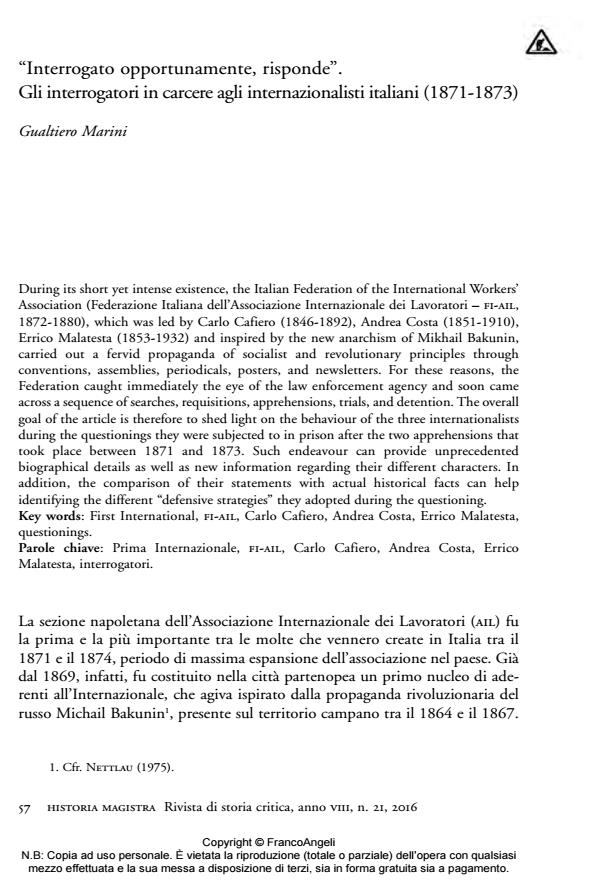"Interrogato opportunamente, risponde". Gli interrogatori in carcere agli internazionalisti italiani (1871-1873)
Journal title HISTORIA MAGISTRA
Author/s Gualtiero Marini
Publishing Year 2016 Issue 2016/21
Language Italian Pages 20 P. 57-76 File size 118 KB
DOI 10.3280/HM2016-021006
DOI is like a bar code for intellectual property: to have more infomation
click here
Below, you can see the article first page
If you want to buy this article in PDF format, you can do it, following the instructions to buy download credits

FrancoAngeli is member of Publishers International Linking Association, Inc (PILA), a not-for-profit association which run the CrossRef service enabling links to and from online scholarly content.
During its short yet intense existence, the Italian Federation of the International Workers’ Association (Federazione Italiana dell’Associazione Internazionale dei Lavoratori - fi-ail, 1872-1880), which was led by Carlo Cafiero (1846-1892), Andrea Costa (1851-1910), Errico Malatesta (1853-1932) and inspired by the new anarchism of Mikhail Bakunin, carried out a fervid propaganda of socialist and revolutionary principles through conventions, assemblies, periodicals, posters, and newsletters. For these reasons, the Federation caught immediately the eye of the law enforcement agency and soon came across a sequence of searches, requisitions, apprehensions, trials, and detention. The overall goal of the article is therefore to shed light on the behaviour of the three internationalists during the questionings they were subjected to in prison after the two apprehensions that took place between 1871 and 1873. Such endeavour can provide unprecedented biographical details as well as new information regarding their different characters. In addition, the comparison of their statements with actual historical facts can help identifying the different "defensive strategies" they adopted during the questioning.
Keywords: First International, fi-ail, Carlo Cafiero, Andrea Costa, Errico Malatesta, questionings.
Gualtiero Marini, "Interrogato opportunamente, risponde". Gli interrogatori in carcere agli internazionalisti italiani (1871-1873) in "HISTORIA MAGISTRA" 21/2016, pp 57-76, DOI: 10.3280/HM2016-021006